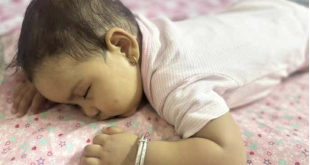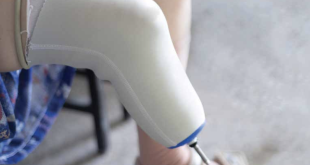Words By: Pragya Pokharel (As per the interview with Dr Nira Singh Shreshta)
In today’s world, women’s health is often overlooked and addressing the same has become increasingly imperative. From anemia to high blood pressure, the changes women go through during pregnancy can have an important impact on her health. There are several conditions such as pelvic floor prolapse, cysts, fibroids, cancer and so on which is affecting millions of women worldwide. These issues not only impact physical health but also carry significant emotional and social ramifications for those affected. As such, understanding and effectively managing these conditions are crucial steps towards promoting women’s overall well-being and empowerment. In this article, we delve into the intricacies of pelvic floor prolapse, cysts, and fibroids, exploring their causes, symptoms, treatment options, and the broader implications for women’s health and quality of life. To provide expert insights, we consulted Associate Professor Dr. Nira Singh Shrestha, Head of the Department of Obstetrics and Gynaecology at Mediciti Hospital, renowned for her profound expertise in the field.
Pelvic Organ Prolapse
Pelvic organ prolapse (POP) occurs when the muscles in the pelvis weaken, leading to the descent or sagging of one or more pelvic organs such as the vagina, uterus, bladder, and rectum. An organ may protrude onto another organ or outside the body. This condition occurs when there is lack of proper pregnancy, delivery and postnatal care.
Pelvic organ prolapses happen because of the weakness in the support system of the pelvic organs mainly, uterus, bladder and rectum. These are the three organs in the pelvis. Whenever there is weakness or weak support system, then these organs may prolapse. A single organ may prolapse or it may occur in combination. Uterine prolapse, bladder prolapse, or rectum prolapse may individually affect certain women, and in some cases, one or more of these prolapses may occur simultaneously. Prolapses occur in varying degrees.
Milder prolapses are usually asymptomatic and it may not require any attention, but when it becomes moderate to severe, we classify them into first degree prolapse, second degree prolapse, third degree prolapse and fourth degree prolapse. Usually first degrees are asymptomatic, some women even with first degree can have significant symptoms and they also need treatment. And second and rest degrees need some form of management. In the initial form of management, patients are asked to go through pelvic floor strengthening exercises called Kegel’s exercise. Women are suggested to do this post-delivery or postpartum and even when they come later in their life with a certain degree of prolapse with milder symptoms.
Symptoms of POP:
In the early prolapse women may not have any symptoms, or some common symptoms might appear like backache, one can feel some dragging sensation and when it progresses, women may start feeling some mass coming out through their vagina. In the initial phase, in the straining or squatting, they will feel the mass but as the degree of prolapse advances, it will be coming out all the time.
Women with POP will feel that something is coming out from the vagina and they will have urinary symptoms. They will feel some kind of sense of inadequate evacuation. They cannot pass urine adequately and may have to stand to pass urine. Sitting or even squatting may not help them. Some may have to push their uterus inside and only may be able to pass the urine. Some may have leakage of urine while sneezing or coughing or even while walking. The problem is called stress urinary incontinence. And some women may complain of constipation as a result of rectum prolapse. And when the degree of prolapses may further, women feel dirty water discharge, and sometime, there will be the presence of blood stains. The prolapsed organ getting injured during the activity causing bleeding and smell. So, these are some of the common symptoms for Pelvic Organ Prolapse.
Prevention:
There should be a proper spacing between deliveries, proper care during childbirth along with post-partum care. Adequate nutrition should be taken, adequate rest should be given to a new mother and Kegel’s exercise is recommended to strengthen the pelvic muscles.
Causes:
- Mismanaged pregnancy, labor, and childbirth (the most common causes)
- Obesity
- Respiratory problems, long-term cough
- Constipation
- Menopause
- Pelvic organ cancers
- Surgical removal of the uterus (hysterectomy)
- Genetics may also play a role in pelvic organ prolapse. Connective tissues may be weaker in some women, perhaps placing them more at risk.
Treatment:
Any condition that increases the abdominal pressure, constipation, and chronic cough should be treated timely. Kegel exercise is sufficient for milder degree, and age-appropriate treatments are done as per the severity. Kegel is usually recommended for young age group and conservative management is done like, ring pessary. Ring pessary is inserted to young women till her family is complete. Ring pessary are recommended to older women who are unfit for surgery or sometimes who are yet to complete their family. If all other measures fail, one can opt for a surgical option, where repair of the pelvic floor, tightening and strengthening can be done. In some cases, uterus is removed and tightening and strengthening is done.
Pelvic floor prolapse is very common in Nepal and with the help of government and funded projects, surgeries are feasible in remote places as well. With time, people are more aware regarding giving birth and keeping proper spacing so hopefully uterine prolapse will gradually decrease in years to come.
Polycystic Ovarian Syndrome (PCOS)
Polycystic ovarian syndrome (PCOS) is a common condition now a days which affects teen-age girls and women in reproductive age groups. It causes irregular menstrual periods, excess hair growth, causes acne, can cause infertility and people with PCOS may be at higher risk for diabetes and high blood pressure. As the name suggests, the ovary will have multiple follicles called cysts. These are less than 10 mm in size. Mostly both the ovaries will be bigger in size with multiple pearl like studded cysts. These numerous cysts are caused due to hormonal imbalance in the body.
The disease is also called lifestyle disease. Although it has genetic background, it is fueled by lifestyle. Even if the condition is genetic but if one maintains a proper lifestyle then symptoms can be avoided. If one has a genetic predisposition along with a bad lifestyle, the polycystic ovarian syndrome fully manifests. Bad lifestyle refers to lack of physical exercise, consuming ultra-processed food and stressful lifestyle and lot of screentime. These are few lifestyle issues which fuels the problem.
The exact cause of polycystic ovary syndrome (PCOS) is unknown, but it’s thought to be related to insulin resistance which will lead to abnormal hormone levels.
Symptoms and Diagnosis:
Typically, girls or women have menstruation irregularities, like late menstruation or no menstruation. Weight gain or typically obesity in most of the cases. There is presence of hair in the face and body aka hirsutism, hair line receding occurs in the scalp areas. Infertility can be seen in married couples. The body image issue might cause depression in the patient.
Diagnosis:
Ultrasound and certain hormonal tests are done. Hormonal findings help us in reaching the diagnosis. In such cases, androgen hormones are in rise and FSH (Follicle stimulating hormones), FSH/LH (Luteinizing Hormone) ratio is deranged. Depending upon the complaints and investigations, diagnosis of PCOS is reached.
Management/Treatment
Focus should always be improving on one’s lifestyle. From proper food, exercise and sleep. Late nights causes disturbance in the hormonal cycle, stress management should be done, dietary modification is required like avoiding dairy products. Patients with PCOS are encouraged to be vegetarian or vegan or recommended to avoid red meat. Sometimes hormones are used as a medicine. Insulin resistance is increased in PCOS so insulin sensitizing agents are given. Cosmetologist are recommended for certain procedure and fertility issues are taken care off by fertility experts.
Uterine Fibroids
Uterine fibroids are a common type of non-cancerous tumor that can grow in the uterus. It is a solid growth on uterus. One of the very common problems in women in reproductive age 15-45. In some cases, it is genetic and it is also called hormone sensitive tumor. Not all fibroids cause symptoms, but when they do, symptoms can include heavy menstrual bleeding, back pain, frequent urination and pain during sex. Small fibroids often don’t need treatment, but larger fibroids can be treated with surgery or now a days with non-surgical options like Uterine Artery embolization (UAE).
Symptoms
Symptoms for very small fibroids goes unnoticed and is seen on an incidental ultrasound. Therefore, in this case it is asymptomatic. When the size starts becoming larger, it starts growing in the inner line of uterus, in submucosal layer, it starts showing symptoms like menstrual issues, heavy bleeding during periods, painful periods and infertility issues along with the pressure symptoms. Pressure of mass is usually felt and it presses on the rectum and causes constipation in the rectum, it will press upon the bladder and can cause Urinary tract infection, there will be urge to urination.
Treatment/Management
If it is asymptomatic, one can wait and watch with regular monitoring. If it becomes symptomatic, its definitive treatment is surgical. There are certain non-surgical available options as well. One non-operative treatment is uterine artery embolization (UAE) which is available in Nepal. For surgery, uterus preserving surgery is done by taking out the fibroid also called as myomectomy. Now a days surgery can be done through a key hole surgery which is known as Laparoscopic surgery. After the age of 45-50, there is option of hysterectomy. HIFU (High Intensity Focused Ultrasound) is also done to shrink the fibroids through an ultrasound and this measure is not available in Nepal as of now.
Urinary Incontinence
Urinary Incontinence is an involuntary escape of urine. The very common one is SUI also called stress urinary incontinence and this happens in the older women and the incidence increases after menopause. It is also related to uterine prolapse. There is a whole system that prevents of leaking of urine. The pelvic floor tissue and muscle strength is important. As a result of repeated child birth or lack of proper care during post-partum, the support of urethra is weak then small stress like coughing or carrying load leads to urine leakage.
The types of incontinence include:
Urge incontinence: This type of incontinence is characterized by an intense need to urinate right away. Often, this happens too quickly for one to make it to a toilet and one ends up leaking urine.
Stress incontinence: When one leaks urine during activities, this is often stress incontinence. In this type of incontinence, the pelvic floor muscles are weak and no longer support the pelvic organs as they should.
Overflow incontinence: If bladder doesn’t empty completely each time one urinates, one could have overflow incontinence.
Mixed incontinence: This type of incontinence is a combination of several problems that all lead to leakage issues. When you have mixed incontinence, you might be dealing with stress incontinence and an overactive bladder.
Who gets incontinence?
Incontinence can happen to anyone. However, it’s more common in certain groups and at certain times of life. Incontinence is much more common in women than in men. This is often related to pregnancy, childbirth and menopause. Incontinence can be caused by long-term (chronic) medical conditions as well. Each of these experiences can cause a woman’s pelvic support muscles to weaken over time.
Prevention & Treatment
Prevention includes of post-partum care, Kegel’s exercise. Older age group following menopause following reduction of estrogen hormone, the pelvic muscles get weaker. Use of estrogen hormones and vaginal gel also helps.
When the issue rises, there are surgical ways to manage the problem. There are other types of urinary incontinence. True incontinence: When urine leakage is continuous. It is caused by fistula, (VVF) Vesicovaginal fistula. This may occur when the urinary bladder is damaged during child birth. There lies a small hole in the bladder and there is continuous urine leak through vagina.
Options: Surgical repair of the opening into the bladder
Neurological issues: Due to neurological conditions, women may have overflowing incontinence. For this, the cause is diagnosed and treatment is done.
Women often serve as the primary caregivers within families, balancing numerous responsibilities and often placing their own needs on the backburner. Amidst this juggling act, it’s easy for women to overlook their own well-being. However, it’s crucial to remain attuned to the changes occurring within one’s body, particularly concerning maternal health, as discussed previously. These bodily transformations unfold over time and warrant attention, particularly if they disrupt daily life. Thankfully, advancements in science have rendered many chronic conditions manageable. Thus, it is incumbent upon us to prioritize our health, proactively attend to our well-being, remain vigilant for any abnormal bodily changes, uphold an active lifestyle, and seek assistance when necessary. By taking these proactive measures, we can safeguard our health and ensure a fulfilling life for ourselves and our loved ones. As women become increasingly aware and attuned to their health and well-being, there is a noticeable trend toward aesthetic gynecology in the evolving landscape of medical care.
Doc Info: (Box text)
Dr. Nira Singh Shrestha
MBBS, MD, Obstetrics & Gynecology/ Minimally Invasive Surgery
Head of the Department of Obstetrics and Gynaecology
Nepal Mediciti Hospital
References: https://my.clevelandclinic.org/health/diseases/8316-polycystic-ovary-syndrome-pcos
 Medicosnext
Medicosnext




